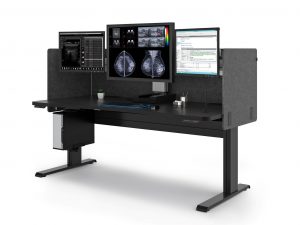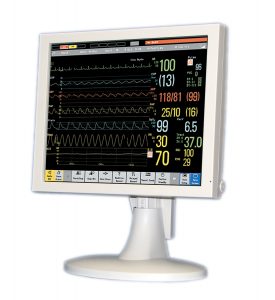New Advancements in X-Ray Imaging
Scintillators, nanophotonic scintillators, nanophotonics, and HiP-CT are just a few of the new terms you will hear when discussing new developments in X-ray imaging.
All of these new advances in radiology help medical professionals see with greater detail and to perform analyses within the body, within the organ of interest.
Scintillators have been in use for approximately 70 years and have been used to develop brighter and faster light emissions. Now, scientists are manipulating length scale and changing the optical properties of the technology.
Nanophotonic scintillators are created by making patterns inside the scintillators or gluing another material with holes in it onto the nanoscale. Researchers have been able to calculate the scintillation levels that would be produced by any configuration of nanophotonic structures.
The process is complicated, and the framework could integrate three different types of physics. The effort has been worth it though, because Charles Roques-Carmes1 at MIT has reported that they “have found a good match between their predictions and the results of their subsequent experiments.”
The belief is that this will open a new field of research in nanophotonics – using research that has already been done in the field of nanophotonics to improve existing materials that scintillate.
Soljacic1 reported a tenfold improvement in emission but stated that it is possible to get up to 100 times improvement – and it is speculated that this will only lead to further improvement.
This is just one development that led to the European Synchrotron Radiation Facility (ESRF)’s Extremely Brilliant Source (EBS)2. The goal of this research was to image intact human organs to the cellular level in three dimensions. Their research enabled them to perform non-destructive, three-dimensional (3D) scans in whole human organs at any location. This technology has been used to image five intact human organ types: brain, lung, heart, kidney, and spleen.
Previous attempts to scan whole organs at the cellular level have shown promise. However, they often require the use of stain or contrast material, take a long time to obtain the scan, and/or cause damage to the human tissue.
Synchrotron X-ray tomography (sCT) has been used to develop the EBS that achieves high resolution compared to the size of the biological sample.
What These X-Ray Advancements Mean For The Medical World
The researchers indicated that they believe “the improvements in medical diagnostic X-rays and CT scans, will reduce dose exposure, and improve image quality.” This in turn will justify the extra time and effort required to integrate these scintillators into existing X-ray machines. These new scintillators could also enable faster, more accurate inspections.
It is speculated that the combination of nanophotonic and scintillators could help you achieve higher resolution, reduced X-ray dose and perform energy-resolved X-ray imaging.
This technique could facilitate understanding of system-level behaviors in health or disease as well.
Claire Walsh2, a mechanical engineer from University College London who is working on the project, speculates that linking HiP-CT images to clinical images through AI techniques will enable validation of ambiguous findings in clinical images with a high degree of accuracy.
Walsh also conjectures that the detailed imagery obtained from HiP-CT will be used with machine learning to improve information deduced from clinical imaging such as MRI and CT scans. It will also be able to better calibrate and improve current technologies in use.
How It Can Help Deliver Better Patient Care
The most notable benefit of these advances in radiology is that the patient receives a more accurate diagnosis.
Additionally, the studies are performed at a higher speed with a lower dose of radiation.
This New HiP-CT Technique Came After The Beginning Of The Global Pandemic
The use of HiP-CT was significantly impacted by COVID-19 – in a positive way. HiP-CT was used during the pandemic to provide new insights into how the disease disrupts blood oxygenation.
After the beginning of the pandemic, researchers began to use several techniques that were used at ESRF to image large fossils. This was combined with the EBS to allow researchers to see the extremely small vessels within a complete human organ so that it could be distinguished from the surrounding tissue. This 3D visualization even allowed them to observe specific cells. The HiP-CT bridges the scales between CT and MRI scans which can resolve down to just below a millimeter and histology, electron microscopy and other similar techniques that resolve structures with sub-micron accuracy but require small biopsies of tissue from an organ.
It was known during COVID-19 that a fundamental pathological sign of the disease was a sharp drop in blood oxygenation levels. HiP-CT provided the first direct evidence that this is a result of “shunting” in the lungs.
Danny Jonigk2 at Hannover Medical School, a researcher working in the project, stated that they combined these molecular methods with the HiP-CT multiscale imaging in lungs affected by COVID-19 pneumonia and gained new insight as to how “shunting” occurs in COVID-19 injured lungs and the impact it has on oxygen levels and the circulatory system.
Researchers compared findings or orthogonal 2D slices through a COVID-19 affected lung with HiP-CT images of the same lung prior to the microscopic analysis. They both identified cavitation of lung parenchyma, alveolar obstruction, thickening of septa between adjacent alveoli and blood capillary occlusion with adjacent cellular infiltrates. A 3D quantitative analysis revealed a decrease in the surface area-to-volume ratio and increased septal thickness between control versus COVID patients.
This information was used to develop a fourth-generation synchrotron source which has enabled hierarchical 3D imaging of multiple intact human organs. The images generated have been high quality from whole organs down to individual organotypic functional units and certain specialized cells at any location within the organ.
The information gained from this research was used to develop The Human Atlas and Human Biomolecular Atlas which is an effort to map the hierarchical structure of human organs.
About Double Black Imaging
Double Black Imaging is based in the USA and creates 100% of our software and performs 100% of our display integration in the USA. We are proud to be the largest medical display supplier and calibration software developer.
You can buy from us knowing that we have a reputation for the industry’s finest customer service, with acknowledgements from thousands of Radiologists and IT professionals.
We provide you with diagnostic imaging systems that keep you on the leading-edge of X-ray services while helping you be more efficient and contain healthcare costs. We don’t just say these things, we mean them, and we stand by them.
Are you looking to add new X-ray services to your facility? Contact us here, call us at (877) 852-2870, or email us at sales@doubleblackimaging.com to see how we can help you provide the best service to your patients.
Charles Roques-Carmes, Nicholas Rivera, Ali Ghorashi, Steven E. Kooi, Yi Yang, Zin Lin, Justin Beroz, Aviram Massuda, Jamison Sloan, Nicolas Romeo, Yang Yu, John D. Joannopoulos, Ido Kaminer, Steven G. Johnson, Marin Soljačić. A framework for scintillation in nanophotonics. Science, 2022; 375 (6583) DOI: 10.1126/science.abm9293
Walsh, C.L., Tafforeau, P., Wagner, W.L. et al. Imaging intact human organs with local resolution of cellular structures using hierarchical phase-contrast tomography. Nat Methods 18, 1532–1541 (2021). https://doi.org/10.1038/s41592-021-01317-x










